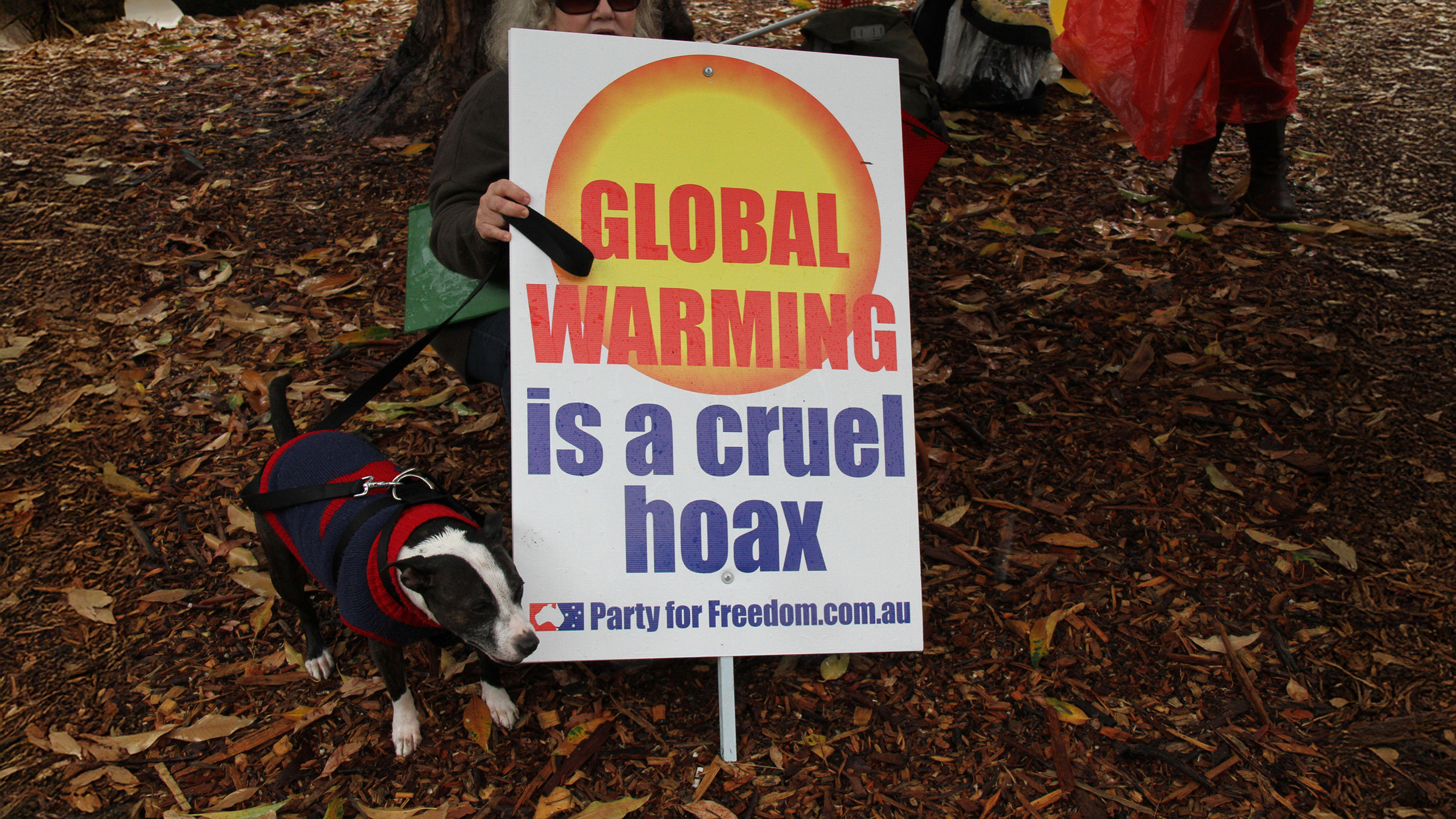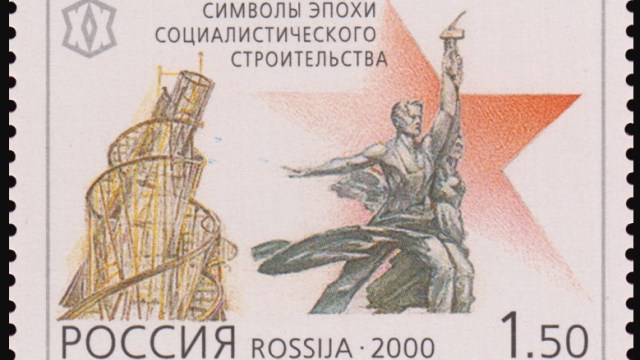The paradoxical reasons for science’s success

- Mano Singham is a Fellow of the American Physical Society and the retired director of the University Center for Innovation in Teaching and Education.
- In this essay, Singham explores some of the popular myths about why science is so successful, and how some people exploit these myths to weaken trust in scientific work.
- A solid understanding of how the scientific process builds reliable consensuses is key to combatting misunderstandings that surround major scientific issues.
Scientific theories have revolutionized human life, enabling us to predict and control events like no other area of knowledge. This has naturally prompted people to question why scientific knowledge works so well.
Influenced by science textbooks, articles, and other media, the public sometimes answers that question with popular pro-science beliefs, such as the belief that science can produce “true knowledge” or conclusively falsify bad theories. However, scholars in the field of science studies — which comprises the history, philosophy, and sociology of science — have found that many of the public’s beliefs about the efficacy of science are, in fact, myths.
These criticisms haven’t percolated widely, but they shouldn’t be dismissed as an esoteric academic debate because it has serious, real-world consequences. After all, people with potentially dangerous agendas can exploit the weaknesses of those myths to cast doubt on the validity of the scientific consensus on major issues like climate change, evolution, and vaccinations. These people can use the same strategies that were employed in the 20th century to fight the scientific consensus on the dangers of tobacco, acid rain, and chlorofluorocarbons.
Combatting these kinds of bad-faith arguments requires a solid understanding of the functions of science and how the scientific process builds reliable consensuses.
Science as “true knowledge”
One common myth about science dates back to Aristotle, who argued that science produces true knowledge that we can be certain of and which is distinct from mere opinion. However, this idea took a beating as scientific theories once thought to be indubitably true were found to be inadequate, and were replaced by other theories. Newton’s laws of motion are a famous example. Believed to be true for about 200 years, they were superseded by Einstein’s theory of relativity.
People whose agendas run counter to the scientific consensus argue that such overthrows show that science is not to be trusted. We see this happening right now as they seize upon changes in recommendations for combatting COVID-19, arguing that scientists do not know what they are talking about. How, they argue, can scientists credibly claim that wearing masks is good at one point in time, change their minds, and then recommend masks again?
One can try to salvage the “science as true knowledge” myth by arguing that it was an error to assign Newton’s laws truth status in the first place, and that those laws were just approximations to Einstein’s “true” theories. So many of our current scientific theories seem so successful that it is tempting to think that we have finally got it right because otherwise their success would be miraculous. But the inability to conceive of alternatives has always been a shaky foundation for any belief.
In the case of evolution, it was long argued that the complexity of the human body, especially of organs like the eye, proved that it must have been designed by a creator. But the theory of natural selection proposed by Charles Darwin and Alfred Russell Wallace showed how complexity can emerge from simple naturalistic mechanisms. We must remember that, at any point in the past, scientists were as convinced of the accuracy of their theories as we currently are of our own.
It seems somewhat hubristic to think that we just happen to live in a time when scientists have finally identified true theories that will never be overturned. Besides, how would we know if we ever reached such an omniscient state? Science is not like a game where bells ring and gongs sound to signal that the correct answer has been reached. Rather, scientists live in a state of permanent doubt about whether their current theories will last.
The function of falsification
A more sophisticated myth concedes that, while scientific theories can never be definitely proven, they can be shown to be false. This view holds that any theory is only provisionally true until its predictions are contradicted by an experiment. However, no single discrepant result can falsify theories because no theory can be tested in isolation. That’s because experimental and observational data — which are far from being pure sensory phenomena or empirical facts — also have theories embedded in them. This makes it unclear where the source of any particular disagreement lies. New theories may also agree with only a few observations, and it takes a lot of hard work by dedicated scientists to accumulate supportive evidence. Anomalous results are always present and it is the investigation of these discrepancies that constitutes a great deal of scientific research.
If applied strictly, falsification would be disastrous for science because every theory would have to be considered immediately falsified and thrown out — even those we hold up as representing the best of modern science. People opposed to the scientific consensus on a given issue are often fervent supporters of falsification because it enables them to point to a discrepant result and say that the consensus is wrong and should be rejected. Eliminating this myth would take away one of their main arguments.
The preponderance of evidence
So, if we cannot prove theories of science to be true or false, why do experiments at all? Because it is the comparisons between experiments and theoretical predictions that constitute evidence in science. Science is effective because it creates comprehensive bodies of evidence that are systematically acquired and evaluated by credible experts using scientific logic that must pass through institutional filters, such as legitimate peer-reviewed publications.
This process eventually leads to consensus answers to important questions because the preponderance of evidence supports them. It is similar to how the legal system works, where evidence is weighed by a group of knowledgeable individuals whose collective work produces a verdict. That verdict can change if new evidence emerges without altering the fact that it was the best verdict at the time at which it was reached. It is this careful weighing of the accumulated evidence — not any single result that is supposedly falsifying — that causes the scientific consensus to shift favor to a new theory.
Contingency in science history
Like political history, science history is written by the victors, and so shifts in consensus are often portrayed as progress. New theories tend to seem better at answering current questions of interest. This lends support to yet another myth: We must be getting closer and closer to true theories. After all, if science is progressing, what else could it be progressing toward if not the truth? If there is a unique, objective reality (often euphemistically referred to as ‘nature’ or ‘the world’) that scientific theories seek to describe, then it is tempting to think that there must also be a unique representation of that reality, and that over time we will get ever closer to it as older theories are found to be inadequate. However, that myth falters because it overlooks the role of contingency in scientific history.
It is easy to see how contingency played an important role in political history: The world’s nations have evolved in specific ways based on contingent events, such as natural disasters, civil wars, and market collapses. A slight change in past conditions could have radically changed world history. Similarly, we can easily see contingency in biological evolution. Earth’s diverse lifeforms exist as they do today because of the unique isolated environments that those organisms experienced over time, producing different species in different parts of the world.
What is harder to see is that the laws of science themselves could also be contingent on past conditions. Unlike political history or evolution, there are no alternatives with which to compare our current scientific theories. The role of contingency is hidden. This is because modern science (and the technologies it has spawned) has been so massively successful that it has become monolithic and universal. It is like an invasive species in biology that overpowers and eliminates all other competing species. This makes it almost impossible to envisage alternatives if different scientific theories had emerged in the past.
Is science progressing toward truth?
Although we cannot empirically test the idea that our present theories could be contingent and not inevitable, the evolution analogy (persuasively argued by Thomas Kuhn in his classic work The Structure of Scientific Revolutions) can help us understand why that might be so. We have plenty of evidence that organisms progress by becoming better adapted to their contemporaneous environments. As those environments change, organisms evolve accordingly. The idea that scientific theories will converge toward truth is similar to viewing our present array of biological organisms as converging toward becoming perfect specimens of their species. But we know that this framing is wrong, and that if we could run the clock again, an entirely different array of organisms is likely to emerge. What we see around us today is just one of a potentially infinite number of possibilities that just happened to emerge due to contingent factors.
Similarly, science progresses as its theories evolve to better answer the questions deemed important at any particular time. A close look at the historical record shows that those questions have changed over time, making the current theories contingent on which questions were considered important at which time, and on how they were answered. The truncated historical accounts in science textbooks often obscure the reality of contingency by portraying science down the ages as seeking better answers to the same questions that happen to concern us now. It is this resulting distortion of scientific history that creates the myth that has seeped into public consciousness: science follows a linear path; it is inevitable that we ended up where we are today; and we are converging toward the truth.
So, how can our current scientific theories work so well if they are not true or close to being true or even heading toward truth? This apparent paradox arises because of the idea that we can represent reality in only one way — “the truth” — and that science is successful only to the extent that it approximates that unique representation. However, just as we view biological species as “successful” because of how well they function in the world, while not necessarily believing they are perfect or the only ones that could have evolved, we can view scientific theories in the same way. As Kuhn said:
“Can we not account for both science’s existence and its success in terms of evolution from the community’s state of knowledge at any given time? Does it really help to imagine that there is some one full, objective, true account of nature and that the proper measure of scientific achievement is the extent to which it brings us closer to that ultimate goal?”
Many different scientific theoretical structures could have evolved that might have worked just as well — or even better — than what we have today. Ours just happened to be the one that emerged due to historical contingencies. But because of the lack of any known alternatives, we succumb to the illusion of their uniqueness. The only way to know if the science we have produced was inevitable is if we could compare sciences with alien civilizations that had developed their theories in complete isolation from ours. That is unlikely to happen.
Challenging myths about science and highlighting the provisional and contingent nature of scientific theories may superficially appear to weaken science’s status as a source of reliable knowledge, thus aiding its enemies. The paradox: It is these myths that, because of their easily exploited weaknesses, actually make science more susceptible to being discredited.
In order to effectively counter the misunderstandings and distortions that surround major scientific issues, we need to make people aware that the reason why the scientific consensus on those issues should be trusted is because they are supported by a preponderance of evidence that has been carefully evaluated by credible experts. While not infallible, that consensus is a far more reliable guide to action than the alternatives advocated by those whose agendas are opposed to the consensus, which have little or no evidence to support them.
About the author:
Mano Singham is a Fellow of the American Physical Society and the retired director of the University Center for Innovation in Teaching and Education and adjunct associate professor of Physics at Case Western Reserve University. This essay is a summary of the arguments detailed in his latest book, The Great Paradox of Science: Why its conclusions can be relied upon even though they cannot be proven (Oxford University Press).





